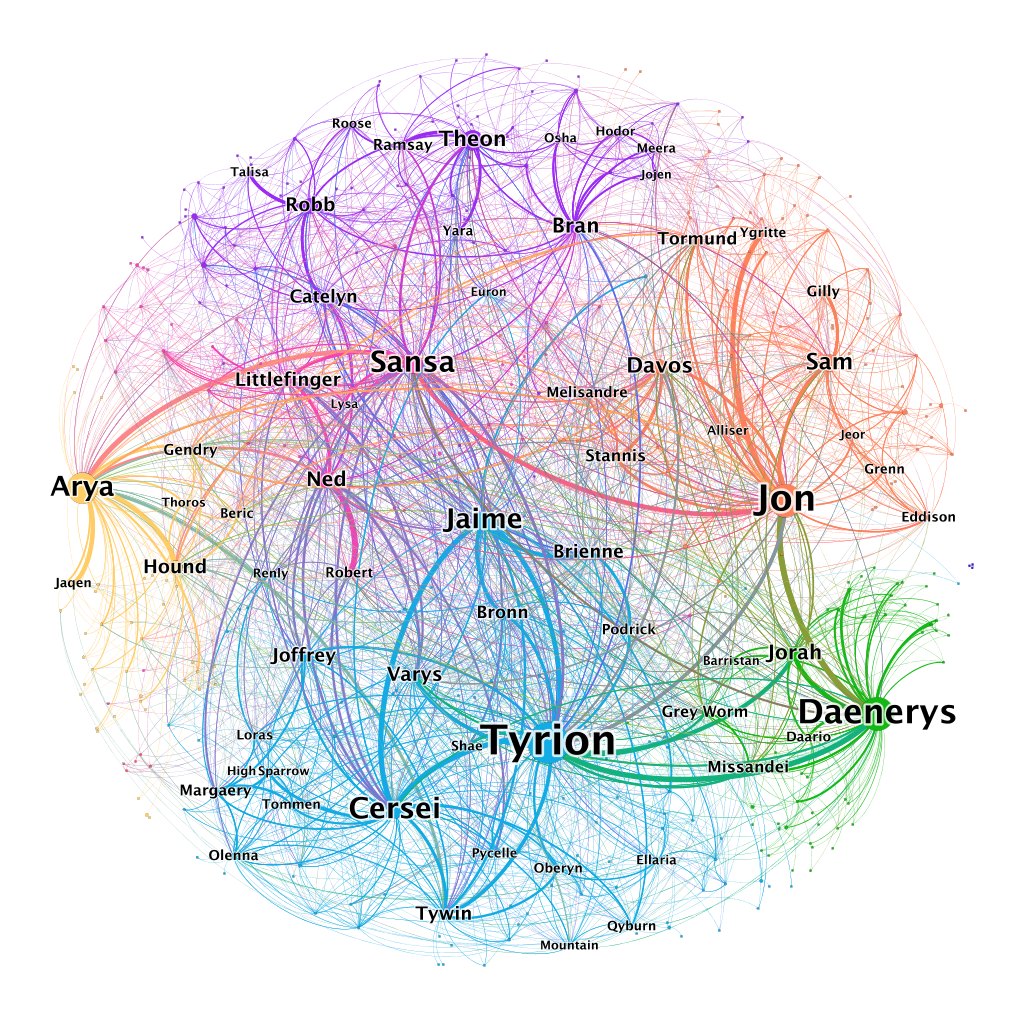About Me

Professor of Mathematics
Mathematics, Statistics and Computer Science Department
Macalester College
St Paul, Minnesota, USA.
I study combinatorics and graph theory, along with their applications to computer science. My research interests include random walks, random graphs, pursuit-evasion games, combinatorial games, social choice theory, enumerative combinatorics and network science.
I earned my BA in Mathematics from Williams College, and my PhD in Mathematics from Yale University, where I was advised by László Lovász. I was a post-doctoral vistor at Carnegie Mellon University where I was mentored by Alan Frieze. I also spent half a dozen years as a software developer in Silicon Valley before personal epiphany impelled me back into academia. I am really proud to be part of the Macalester MSCS Department, where my colleagues and students work hard, play nice, and take care of one another.
Network of Thrones
Here is the network data sets that I created for the books and the TV series based on George R. R. Martin’s fantasy epic
- Network data for “A Song of Ice and Fire” (the novels)
- Network data for “Game of Thrones” (the television series)
- Visit my Network of Thrones blog to read about my analysis and learn a bit about the basics of Network Science.
In 2016, a student and I published an introductory article for MAA Math Horizons that performed a network analysis for “A Storm of Swords,” the third book in George R. R. Martin’s “A Song of Ice and Fire” series. Our result went viral, thanks to a playful Quartz article by Adam Epstein about it. Other nice articles following, including a thoughtful IFLScience article, an entertaining video summary from Huffington Post and the definitive rebuttal from the AV Club.
The American Mathematical Society even designated my Network of Thrones as a Mathematical Moment. This series of posters promotes the impact of mathematics on science, nature, technology and human culture.
Performing network analysis of ASOIF and “Game of Thrones” (the HBO adaptation) became a hobby for me. My Network of Thrones blog collects the resulting observations. This project also led to a really interesting academic collaboration with Michael Chemers that combined data science with the poetics of performed work.
Quartz interviewed me again just before the final season, and even produced a short video about the project.
How to Be a Player: Impartial Combinatorial Games
Here is my online primer about impartial combinatorial games. I use material for a 3-4 week unit in my Discrete Math course. We start with the game of nim (of course!) and then generalize the patterns into the Sprague-Grundy theorems. This is a great way to have beginning undergraduate students go on a mathematical journey that uses lots of discrete math techniques. If you find it useful, please let me know!
Macalester Journal of Catalan Numbers
The signature assignment of my Combinatorics class asks students to characterize one of the many known Catalan families (around 300 of them, I believe). Students polish their work in multiple revisions before their work is “accepted.” The student papers are then bound together into an issuue of our series of Catalan Journals. Here are the results from previous classes.
- Volume 1 (December 2009)
- Volume 2 (December 2011)
- Volume 3 (December 2013)
- Volume 4 (December 2015)
- Volume 5 (December 2016)
- Volume 6 (December 2017)
- Volume 7 (December 2018)
- Volume 8 (December 2021)
Velvet Erdős
In 2015, I fulfilled my ambition to commission a velvet painting of the incomparable Paul Erdős. Uncle Paul is an icon: he helped to define 20th century combinatorics, as a problem poser, a problem solver, and a mathematical connector. There will never be another mathematician like him.
Bruce White, a North Carolina-based artist, created a beautiful painting that now hangs in my office. Thanks, Bruce!
